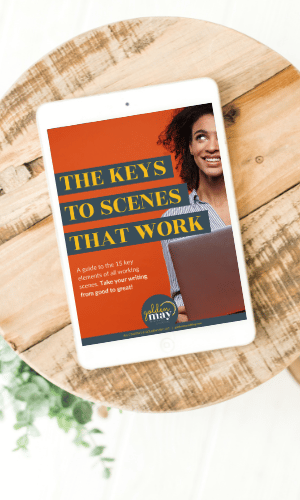Stories are about change—specifically, they are about how characters change. Characters are the heart and soul of any story, which means that we should develop the story around them—starting with your protagonist.
Readers engage in good stories when they know what the protagonist wants and why it matters to them. They become invested in the character’s struggles and successes as they pursue those goals, rather than the plot itself. Readers want to see the main character change. We want to see them fail, learn, and ultimately succeed. Our brains are actually wired to put ourselves in the main character’s shoes and learn as they learn.
Choosing your protagonist, and the journey they’re about to take, is one of the most important decisions you’ll make in your story. Whether you already have a main character in mind, or you’re just beginning to create them, it’s essential to look at this choice critically and with an open mind!
Who is the best main character?
Your main character should be the person in your story with the most to struggle against, and the most to learn. Their struggle, and their growth, is what ultimately proves your story’s point. They should begin with a false belief about how the world works, called the misbelief or the internal obstacle. Then, throughout the course of the plot, external events should challenge them to make decisions that are either in line with this internal obstacle or in opposition to it.
For example, in The Hunger Games, Katniss Everdeen opens the story with an internal obstacle belief that “Survival, of self and family, is the only reasonable goal.” Because of this belief, she decides to volunteer for the Games to save her sister. Her initial goal is to win the games so she can get home to provide for her family, and she plans to do so by working alone, without alliances.
Throughout the majority of your story, your main character should continually make the wrong choices because of their internal obstacle belief. This is the whole purpose of act two! The misguided choices they make will have consequences that eventually open their eyes to their mistaken beliefs and teach them the true path—the lesson of your story point. Only after unlearning this internal obstacle can they finally achieve their goals. At the climax moment, your main character should make a decision which demonstrates they’ve unlearned their internal obstacle, and the consequences of that decision are what ultimately proves your point.
Katniss Everdeen’s journey of change is about her overcoming her belief that survival is the only worthwhile goal. As the consequences of her decisions begin to add up, the story comes to a head in her alliance with Rue and consequently Rue’s death. Katniss learns the story’s point “There are goals more worthy and important than simply surviving” and then proves it when she decides to eat poison berries with Peeta, rather than killing him to succeed, proving that standing up to the Capitol is more important than surviving.
It’s critical that your main character is the one who needs to learn the story point the most. Without a strong internal obstacle belief, your character will not undergo change, which means that they will have nothing to learn and your story point will not be proven. The character with the greatest opportunity to learn provides the best arc of change, and is the best way to prove your point.
Peeta Mellark would not have been the right main character for The Hunger Games because he already knows the story point, so his journey of change is not as compelling. He enters the Games already trying to protect Katniss, he forms alliances for the purpose of keeping the other tributes away from her, and his decisions demonstrate that he puts others before himself. Because of this, the story’s message is best delivered through Katniss’s change, not Peeta’s.
Note: We typically recommend that there only be one protagonist in your story. Even when you have multiple POV characters, there should be one character arc that stands out as the story’s core trajectory. They’re the character all your other characters revolve around.
Narrowing down your options
The first step to determining who your protagonist is, or evaluating if they’re the right fit for your story, starts with listening out all the potential options. Remember: even if you already have a main character in mind, keep an open mind and think about your choice critically!
Step #1: List all the potential major / secondary characters in your story. Begin with creating a list of all characters that could possibly be in your story. Aim for about 15-20 different options. This list can include currently unnamed characters (the janitor, the mom, the witch, etc) as well as any characters you’ve already begun to develop. Try to think outside the box: what kinds of people might live in your story world? Who is at the top of the power system? Who is at the bottom?
Step #2: From the list above, pick three major characters to focus on. These should be the characters with the most at stake, and the most potential for change throughout the story. Answer the following questions for each of them:
- What do they want most in the world? Why?
- What will happen if they don’t get what they want? Why?
- What is the biggest thing standing in the way of achieving what they want? Why?
- What internal flaws are holding them back from achieving their goals?
Step #3: Choose your main character. Look at your answers from Step 2. Answer these questions:
- Who faces the most compelling dilemma?
- Who has the most at stake?
- Who has the most to learn and overcome internally to achieve their goals?
- Who’s journey of change has the most potential to prove your story’s point?
Based on how you answered the above questions, the character who stands to learn the most is your best option for a protagonist.
I’ve chosen my protagonist! What’s next?
Now that you know who your main character is, it’s time to begin developing their arc of change!
Start with deciding what message you want your story to convey. By creating your characters around your story point, you’ll ensure their arcs prove it. Check out What’s Your Point for additional advice! Next, consider what internal obstacle belief—usually in direct contrast to your story point—puts your character in the best position to change throughout the story.








Leave A Comment